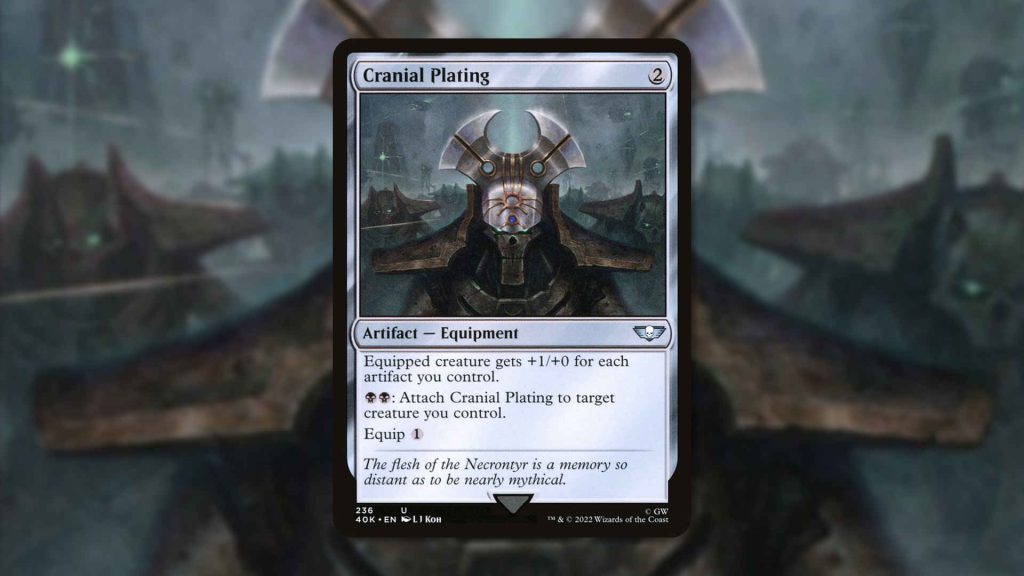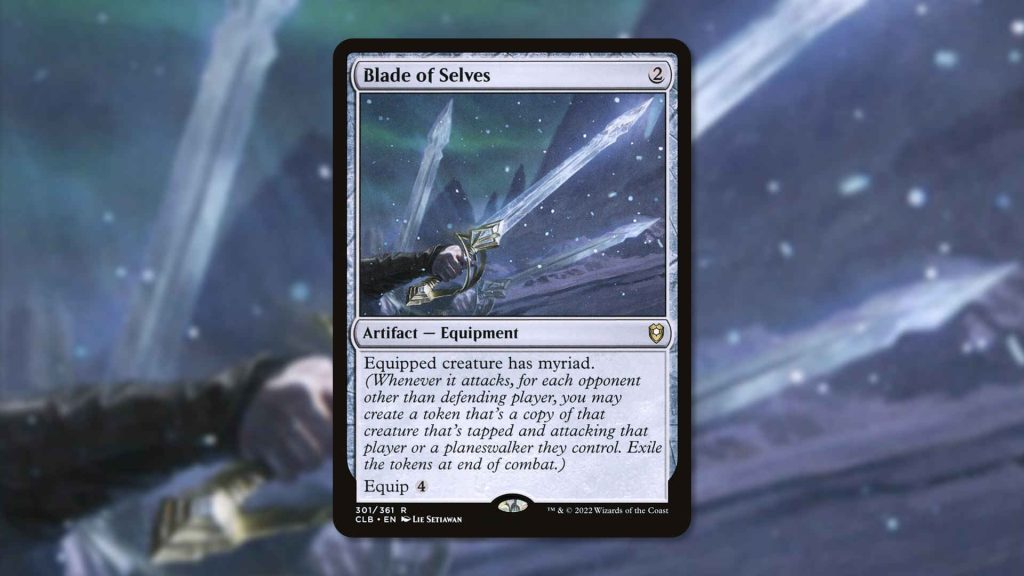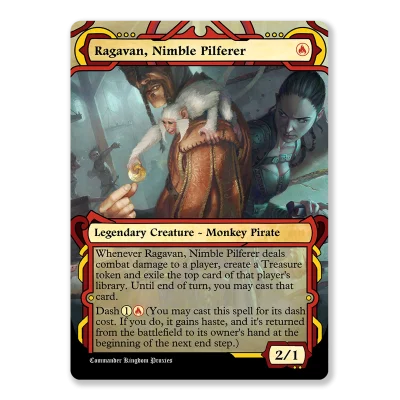The fundamental gameplay element in Magic: The Gathering (MTG) is the Equip mechanic. It is introduced in the Mirrodin block. To enhance their creatures’ abilities or stats, it allows players to attach equipment artifacts to their creatures. Unlike other card types, equipment remains on the battlefield and can be reassigned to different creatures using its Equip cost. This offers strategic depth and versatility in gameplay.
“Sword of Feast and Famine” – one of the notable Equipment cards, is known to provide dual benefits. Apart from boosting a creature’s power and offering additional abilities, they also persist through the creature’s death and is available to be equipped to a new creature. These additional abilities of this notable card emphasize long-term strategy and resource management, distinguishing it from single-use spells or abilities.
Rules for Equipping
Equip can only be activated at sorcery speed, meaning it can only be done during the player’s main phases and not in response to other actions. This limitation requires strategic planning to utilize equipment effectively. However, certain cards and abilities, such as “Leonin Shikari,” allow players to circumvent this rule under specific conditions, enabling equipment to be attached at an instant speed.
These exceptions add some very interesting layers of complexity along with opening up opportunities for surprise tactics and unexpected plays. The requirement for the creature to be under the player’s control and the targeted nature of Equip also requires likely interaction with rules around control and targeting, resulting in strategic gameplan planning of MTG.

Types of Equipment
Initially, equipment cards were colorless, but through Alara Reborn and Zendikar Rising expansions, equipment with colored casting and equip costs were introduced; allowing greater integration with the color-specific strategies and themes of MTG and broadening the tactical considerations for deck building.
The mechanic’s versatility expanded considerably because of the introduction of artifact creatures, such as those from Kamigawa: Neon Dynasty assisted to also serve as equipment. The best part is that these cards can switch between being creatures and equipment, thus offering dynamic options for responding to continuously changing battlefields.
Equip vs. Attach
It is important to understand that all equipment involves attachment to creatures, but not all attachments are considered equipment. Auras is another card type that can attach to creatures, lands, or other permanents to provide benefits or restrictions. Understanding the difference between Equip and Attach helps to understand gameplay interactions and rules better about how various cards and abilities function within the game’s framework.
Knowing and grasping this difference is very important to understand how things work together and what their limits are. For example, creatures with shroud or hexproof cannot be targeted using Equip abilities whereas, some auras can attach without targeting.

Strategies and Tactics
To create powerful synergies and enhance the capabilities of their creatures for many decks, players’ core strategy is Equipping creatures. The equipment cards are valuable assets in both offensive and defensive plays. However, the strategic decision of when and what to equip decides the tide of the game.
The creative combinations and interactions with other cards can be achieved through the versatility of equipment. This encourages players to explore unique deck-building strategies. Cards like “Sword of Feast and Famine” is one of the best examples of exploring the equipment ability to significantly impact the gameplay. It not only provides stat boosts but also offers additional effects that can provide card advantage and disrupt opponents.
Notable Equip Cards
“Sword of Feast and Famine” is a prime example of the impact equipment can have on the game. It offers a combination of protection, stat boosts, and powerful additional effects.
Here’s a summary of additional notable cards along with their notable impact they can have on the game:
- Swiftfoot Boots – This equipment is popular because it provides both hexproof and haste to a creature, leading to protection from spells or abilities while allowing it to attack or use tap abilities immediately. Because of its low equip cost, utility, and speed benefits, it is a staple in many decks
- Lightning Greaves – Similar to Swiftfoot Boots, Lightning Greaves offers haste and shroud instead of hexproof. The key difference is that it can be equipped for free, making it incredibly efficient for immediate impact. However, it is important to know that the shroud sometimes limits your ability to further interact with the equipped creature.
- Skullclamp – Is popular for its ability to turn creature deaths into card advantage. No wonders, Skullclamp has been a controversial piece of equipment due to its potency in generating card draw. It is an incredibly powerful tool for decks because of its ability to draw two cards whenever the equipped creature dies resulting in creating and sacrificing creatures easily.
- Whispersilk Cloak – This equipment provides a unique combination of shroud and making the equipped creature unblockable. The use of this equipment provides an enormous advantage as it allows to convert important creatures almost untouchable. It also assists these creatures to deal direct damage, compensating the slightly higher cost of this equipment.
- Sword of the Animist – This card stands out for its land ramp capability and is a versatile choice for many gameplay strategies. It allows you to search your deck for a basic land whenever the equipped creature attacks, to put onto the battlefield tapped. This effect is particularly valuable in colors or decks that struggle with land acceleration.
These cards with versatile capabilities showcase the depth and diversity of strategies that can be enabled by the Equip mechanic. They often become the centerpiece of decks that are designed around them. Needless to say, evolution of equipment cards reflects ongoing development and the continuous exploration of new gameplay possibilities in the game.
FAQs and Common Misconceptions
Understanding the rules and nuances is essential for effectively utilizing equipment in gameplay, as well as for anticipating and countering opponents’ strategies involving equipment.
- Can I equip at instant speed?
Generally, equip can only be activated at sorcery speed unless a card specifically allows it otherwise. - What’s the difference between equipping and attaching?
Equip specifically refers to attaching equipment to creatures. Attach can also apply to Auras and other types of cards. - Can you unequip equipment?
You cannot unequip but can move equipment to another creature by paying the equip cost again. - Can equipment be attached to enemy creatures?
Equipment can only be attached to creatures you control. - Can you equip shroud creatures?
No, shroud prevents creatures from being the target of any abilities, including equip. - Can tokens be equipped?
Yes, as long as they are creature tokens. - Is there a limit to how many equipment can be attached to a creature?
No, there’s no limit unless specific rules or effects prevent it. - Can I equip to a tapped creature?
Yes, the state of being tapped or untapped does not affect equipping.
Conclusion and Future of Equip Mechanic
Since its introduction in the game, the Equip mechanic has evolved significantly. It has evolved as an irreplaceable component of MTG’s strategic complexity. It definitely holds a promising future and possibilities of further innovation because of its ability to adapt and find new expressions. Expressions like the introduction of colored equip costs and artifact creatures with equip abilities.
MTG will continue to explore new sets and mechanics because of the popularity, appeal, depth, and strategic importance of equipment in the game. In the future, it is possible that the Equip mechanic may likely see new iterations and applications, and may continue to offer players, diverse and dynamic strategies for victory.





